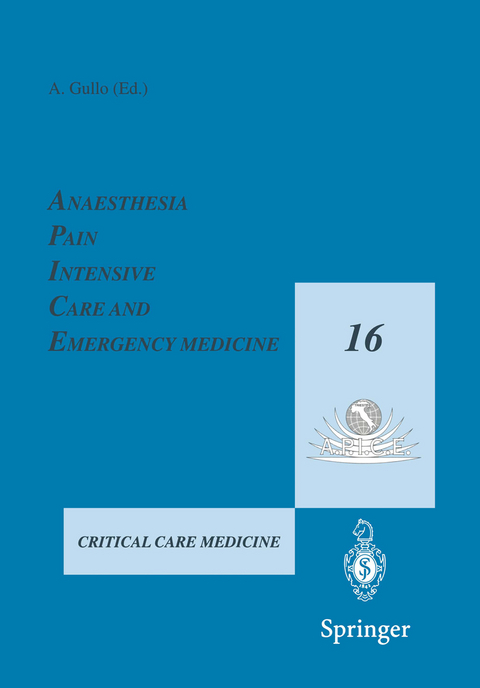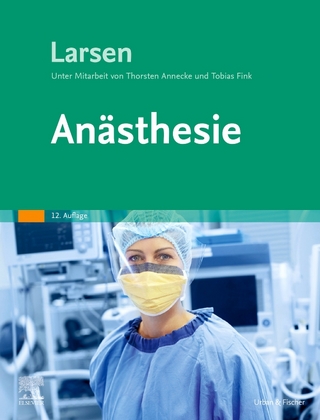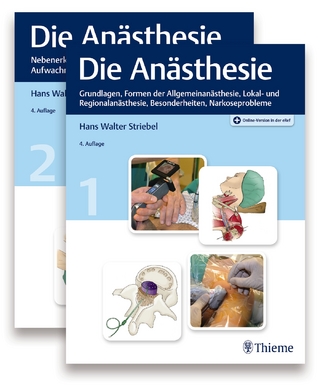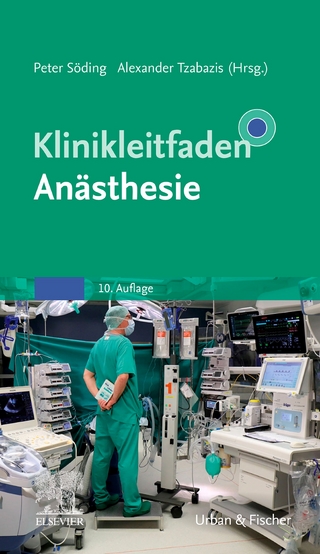
Anaesthesia, Pain, Intensive Care and Emergency Medicine — A.P.I.C.E.
Springer Verlag
978-88-470-0176-3 (ISBN)
Focus on Key Points on Critical Care.- One Clinicians Lifetime of Bringing Technology into Medicine and its Impact upon Critical Care Patients.- Monitoring in Acute Brain Injury.- Brain Protection.- Respiratory Effects of Anaesthesia.- Aspiration of Airway Dead Space: A New Method to Enhance CO2 Elimination.- Myocardial Preservation during Cardiopulmonary Resuscitation.- Reduced Post Resuscitation Myocardial Dysfunction after Low-Energy Biphasic Waveform Defibrillation.- Myocardial Dysfunction in the Perioperative Period.- Trauma Resuscitation.- Monitoring of Intra-Abdominal Pressure and Clinical Challenges in Intensive Care Unit Patients.- Experimenting on Your Fellow Humans in 2001. Update of the Declaration of Helsinki and Progress from the International Conference on Harmonisation.- Ethical, Legal, Practical and Scientific Challenges in Perioperative Medicine.- The WHO and Pain.- High Frequency Percussive Ventilation.- Lung.- Experimental Models of Acute Lung Injury.- Animal Models of Asthma.- Optimization of Ventilation and Perfusion Matching.- Alveolar Recruitment.- How to Open an Atelectatic Lung.- Clinical Experience with Open Lung Management Experience in Trauma Patients.- Semirecumbency Prevents Nosocomial Pneumonia in Mechanically Ventilated Patients.- Acute Bronchial Asthma: Indications for Intensive Care.- Esophageal Pressure in Anaesthetized Patients: Difficulties and Frequent Mistakes.- Haemodynamic and Metabolic Evaluations by Rebreathing Methods.- Monitoring Pulmonary Capillary Blood Flow and Alveolar Dead Space Using the Combined Methods of Volumetric Capnography and “Partial CO2 Rebreathing” (Nico2).- Application of “Single Breath Volumetric Capnography” Analysis in Open Lung Strategy: Description of a Monitoring Tool.- How Permissive ShouldHypercapnia Be?.- Capnography and Cardiac Output Determination.- Improvements in Percutaneous Tracheostomy: the Single-Step Rotational Dilation.- Trauma.- The Challenges of Delivering Acute Medical Services to Trauma Patients in Remote Locations.- Trauma — Stabilization, Assessment and Transportation.- Trauma Intensive Care: Early and Late Challenges.- Trauma Scoring Systems.- Blast Injury.- Prognosis in Cerebral Dysfunction in Patients with Head Trauma.- Respiratory Failure in Brain Injured Patients.- Blunt Chest Trauma.- Chest Trauma: Invasive Thoracic Procedures and Vascular Cannulation.- Abdominal Trauma.- Visceral Trauma: Diagnostic Imaging and Interventional Radiology.- Trauma Operative Procedures: Timing of Surgery and Priorities.- Trauma in Children.- Trauma in Pregnancy.- Trauma in the Elderly.- Trauma Anaesthesia and Pain Management.- Metabolic Pathways in Trauma.- Cardiopulmonary Resuscitation in Trauma and Early Defibrillation.- Acid-Base Disorders.- Homeostasis: Basics, Definitions, Clinical Evidence.- Physical Chemistry and Clinical Acid-Base Physiology.- A “Post-Copernican” Analysis of Intracellular pH.- Physiological Consequences of Acid-Base Disorders.- Clinical Approach to Acid-Base Balance.- Using Base Excess.- Intraoperative Fluid Management.- Fluid Management in GI Surgery.- Postoperative Fluid Management.- Treatment of Acidosis: Sodium Bicarbonate and Other Drugs.- Lactic Acidosis.- Acid-Base Balance During Renal Replacement Therapies.- iPH and Splanchnic Dysfunction Management.- Crystalloids / Colloids: Controversies.- Perioperative Medicine.- Preoperative Assessment.- Patient Informed Consent.- Coordination and Responsibilities in the Operating Theatre.- How to Plan Anaesthesia.- Monitoring and Assessment of Perioperative Vital Functionsin Major Non-Cardiac Surgery.- How to Balance General Anaesthesia.- Decision-Making during Anaesthesia.- Anaesthesia for Abdominal Surgery.- Total Intravenous Anaesthesia.- Dobutamine and Esmolol, Opposite Action or Sometime Synergetic Therapeutic Actions.- Intraoperative Spinal Cord Monitoring: Evoked Potentials and Cerebrospinal Fluid Oxygenation.- Spinal Cord Injury in Thoracoabdominal Aneurysm Surgery: Methods of Intraoperative Protection of the Spinal Cord.- Ischaemic Spinal Cord Injury Following Thoracoabdominal Aneurysm Surgery.- The Elderly: From Physiopathology to Surveillance in the Perioperative Period.- Priorities and Optimization of Care in the Elderly — Minimizing Disability.- Surgery in the Elderly — Outcome and Complication Pattern.- Perioperative Challenges in Mentally Handicapped Patients.- Controversial Aspects in Perioperative Medicine.- Postoperative Pain Challenge.- The Challenge of Postoperative Analgesia.- The Management of Postoperative Pain — Drugs and Anaesthetic Techniques.- Postoperative Analgesia in Ambulatory Surgery.- Cost-Effectiveness of Postoperative Pain Management.- Neurologic Complications in Cardiac Surgery, is it Predictable?.- Myocardial Revascularization with Laser.- Advances in Anaesthesia Techniques for Children.- Pain Management in Children.- How Can Anaesthetists Modify Stress Response During the Perioperative Period?.- Obstetrics.- Trends in Obstetric Anaesthesia.- Inhalation Anaesthesia for Caesarean Section.- Principles of Epidural Dosing in Labour.- Epidural, Spinal or Combined Spinal Epidural for Caesarean Section.- Do We Need a Test Dose for Epidural Anaesthesia and Analgesia in Obstetrics?.- Complications in Obstetric Anaesthesia.- The Obstetric Patient in Intensive Care: Causes of Admission and ImportantConsiderations.- High Dependency Unit in the Obstetric Department.- Obstetric Anaesthesia and Maternal Morbidity and Mortality.- Disseminated Intravascular Coagulation in the Obstetric Patient.- Cardiopulmonary Resuscitation in the Parturient.- Cardiopulmonary Resuscitation in the Newborn.- Legal and Ethical Implications of Obstetric Anaesthesia.
| Erscheint lt. Verlag | 1.11.2001 |
|---|---|
| Zusatzinfo | L, 1747 p. |
| Verlagsort | Milan |
| Sprache | englisch |
| Maße | 170 x 244 mm |
| Themenwelt | Medizin / Pharmazie ► Medizinische Fachgebiete ► Anästhesie |
| Medizin / Pharmazie ► Medizinische Fachgebiete ► Intensivmedizin | |
| ISBN-10 | 88-470-0176-5 / 8847001765 |
| ISBN-13 | 978-88-470-0176-3 / 9788847001763 |
| Zustand | Neuware |
| Haben Sie eine Frage zum Produkt? |
aus dem Bereich


